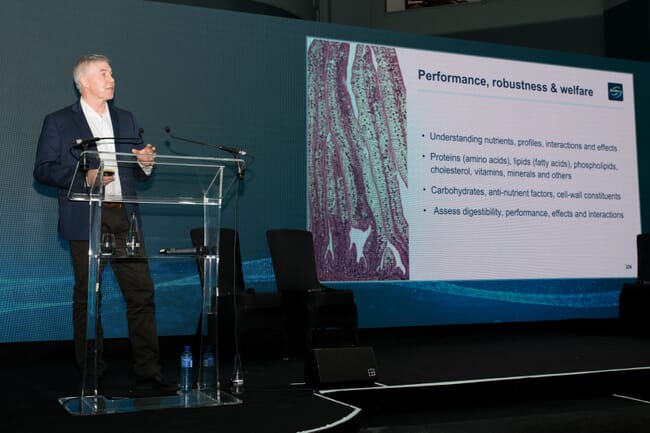
© BioMar
Presenting at the recent Global Seafood Conference, held in Scotland last week, BioMar’s research and development director, Simon Wadsworth, stated that the recent provision of algal oils has allowed key fatty acids to be supplemented in over 4 million tonnes of BioMar feeds. This has made an important contribution to aiding key physiological and immune functions that are dependent on the supply of the EPA and DHA nutrients.
Wadsworth highlighted that the long-term reduction in the use of marine ingredients has contributed to the decreasing levels of these essential fatty-acids in aquafeeds, underlining the role of novel ingredients in reversing this trend.
“The novel ingredients also offer exciting synergies with existing raw materials. Single cell proteins incubated with soybean meals can reduce the presence of anti-nutrients as well as significantly increase overall protein levels. This technology opens other opportunities with a range of other existing, high-volume raw materials,” said Wadsworth, during his presentation at the seafood summit.
Also on the menu, insect meals are now well documented for several species of aquatic animals. Results show strong growth performance at high levels of inclusion, promoting robustness and health.
“The inclusion of insect meal can help shrimp better resist common bacterial infections like vibriosis and viral diseases such as white spot syndrome virus which is a significant concern in shrimp farming. The combination of antimicrobial peptides, chitin, and lauric acid in insect meals contributes to these health benefits by enhancing immune function, improving gut health, and providing anti-inflammatory effects,” commented Elin Kvamme, global aqua director at Innovafeed, who joined Wadsworth for the seafood summit’s aquafeed panel.
As the aquaculture industry continues to grow the demand for both existing and novel raw materials will rise. These new nutrients sources are not only essential but are proving to be highly beneficial in supporting the health and robustness of aquatic species.




